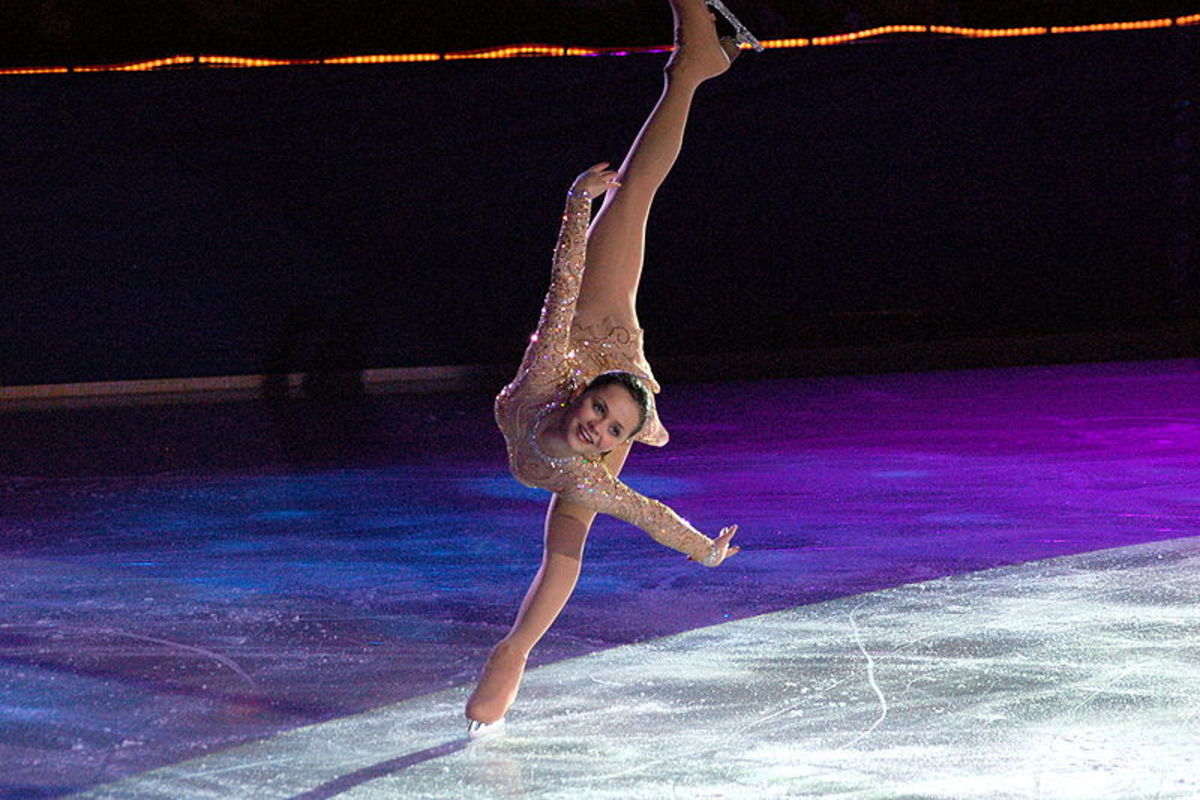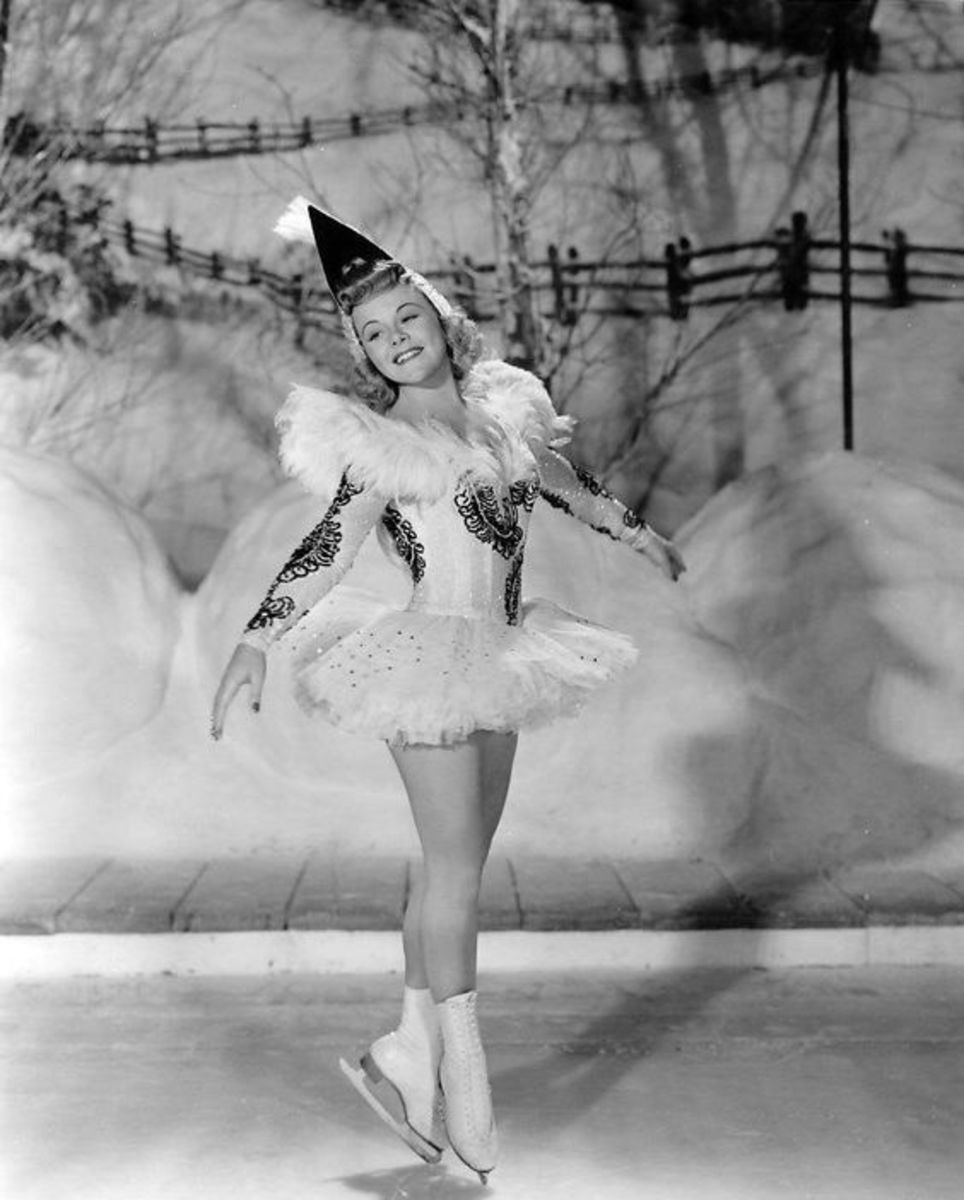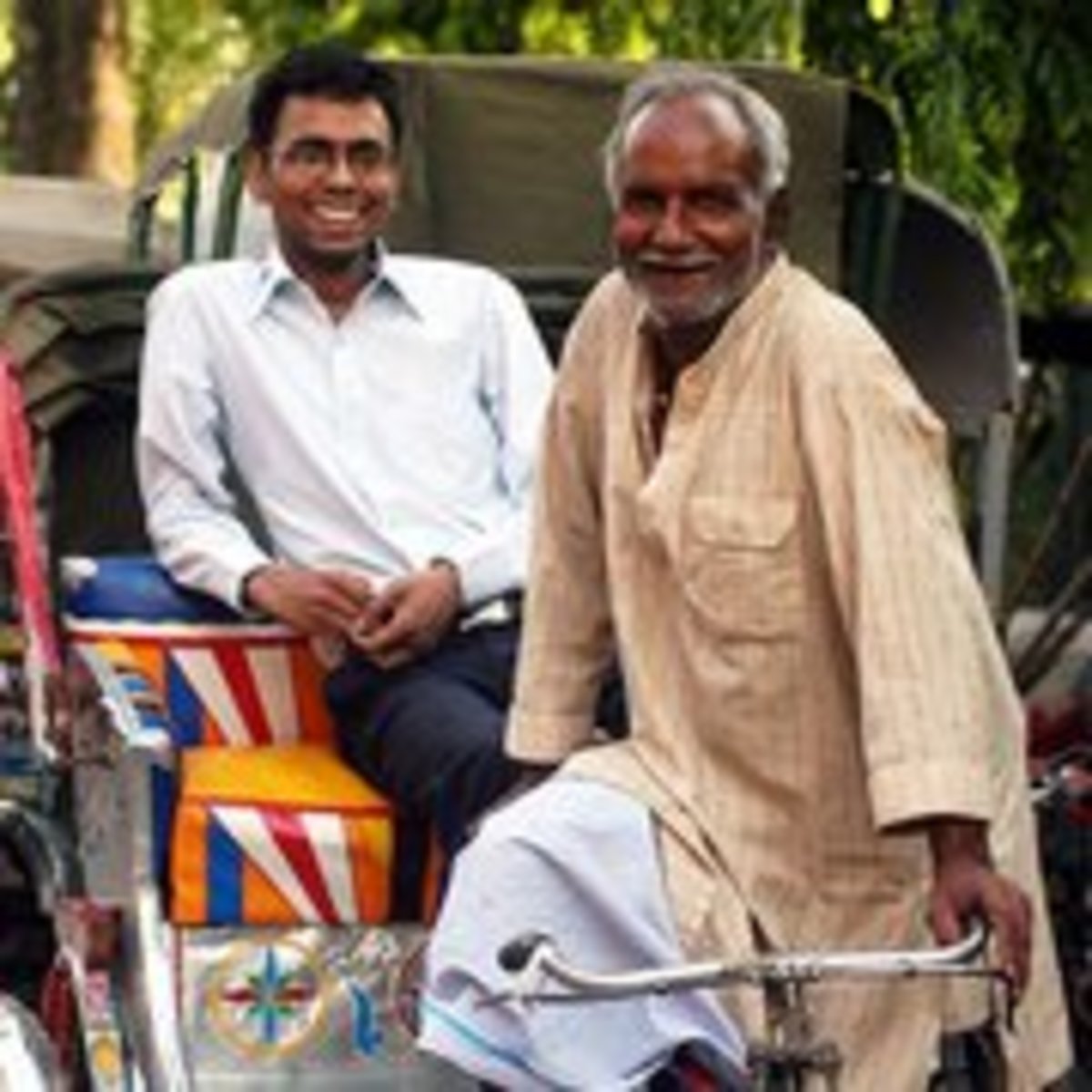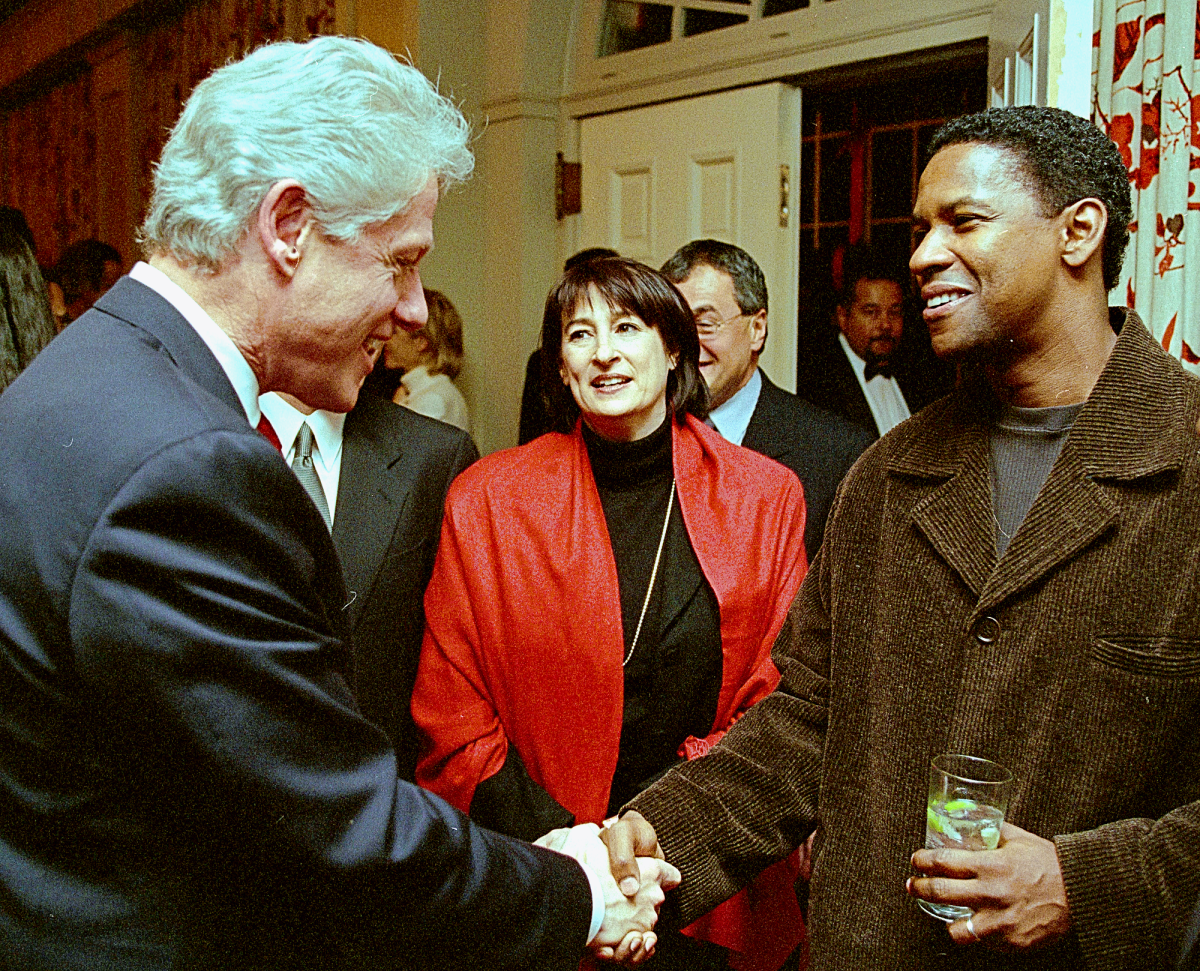Biography of Scott Hamilton
Scott Hamilton posing with fans in Canada
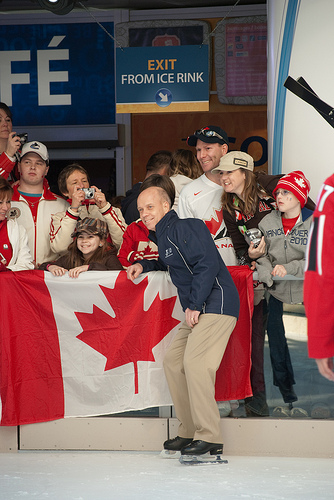
One of the most memorable and inspirational sports figures in American history is figure skater, Scott Hamilton. He is known around the world for his brilliant, artistic skating - a talent that helped him become a four time World Figure Skating champion and the 1984 Olympic Gold Medalist. He has also became known in recent years for his very public battle with cancer. What most of the public does not know is that Scott had a very trying childhood. He had to overcome a severe childhood illness to become the champion that he is today.
Scott Hamilton was born on August 28, 1958 in Toledo, Ohio. When he was just two days old, his birth mother put him up for adoption. At six weeks old, Scott was adopted by Dorothy and Bernie Hamilton. Although Scott was very small, he seemed to be a perfectly normal and healthy baby. For the first two years of his life, he had no illnesses at all.
At the age of three, Scott began to be constantly plagued by sickness. He dealt with an array of respiratory diseases, and had trouble digesting food. The most alarming thing, was that he seemed to stop growing. Scott’s parents immediately took him to his doctor for testing. Although the doctor was not sure of the cause for Scott’s illness, he presumed it was due to Malabsorption Syndrome. Scott was put on a gluten and milk free diet in order to help his body digest food.
Although the diet helped Scott put on some weight, he still did not grow as quickly as the other children usually do. By the time he started first grade, he only weighed thirty-three pounds. Obviously, his small stature had an effect on this attitude about school. According to Scott, “The fist day of school was humiliating. All of the other kids were at least a head taller than me. That immediately caused me to be the center of ridicule. To make matters worse, at lunch time, all of the other kids had milk, sandwiches, and homemade cookies and cupcakes. There I was with my water, rice cakes, and gluten free yogurt. I was not like any of the other kids, and they knew it. I hated going to school” (Hamilton and Benet, 1999, p. 24).
School never became better for Scott. Because of numerous hospitalizations, Scott struggled to keep up with the other kids in his class. When he was in school, he took antihistamines to help with his respiratory infections that made him lethargic and drowsy. This made it difficult for him to concentrate. His relationships with other students never improved either. He was always bullied, he was never picked for teams, and he never had any close friends.
When Scott was nine, his health once again took a turn for the worse. Prior to this, Scott’s doctors were able to control his health with diets and medicines. By this time, the diets were no longer helping. Scott now only weighed forty-four pounds and was three feet, eleven inches tall, and he was longer able to properly digest his food at all. The doctors put him on a feeding tube. He kept the feeding tube for one full year, wearing it everywhere - even to school.
At the age of ten, after years of testing, a parade of doctors, and humiliating medical routines, Scott’s parents finally found a doctor at the Children’s Hospital in Boston that had an answer for Scott’s illness. It was Shwachman’s Syndrome, which is “a pancreatic enzyme deficiency that affects digestion” (Hamilton and Benet, 1999, p. 28). The disease is treatable by medicine and vitamin supplements. Once on the medicine, Scott had immediate improvement. He gained eight pounds in the first eight weeks. Unfortunately, with the delays in his growth, Scott was still never at the same height and weight of his peers.
After Scott’s health began to improve, his family doctor recommended that his parents put him in a sport to help him gain physical strength. When asked what sport he wanted to play, Scott did not chose the typical sports like baseball and football. He decided on figure skating. “My sister was taking figure skating lessons. I thought she was the coolest person in the world, and I wanted to do everything she did. If figure skating was good enough for her, it was good enough for me” (Hamilton and Benet, 1999, p. 28).
Right away, Scott loved figure skating. He could barely stand up. He was constantly falling. The first day, he even managed to hit his head on the ice so hard that he passed out. Nevertheless, he felt like he belonged there for one simple reason - “I saw that all the other kids, even the bigger, athletic ones, were having just as much trouble as I. For once I was on an equal footing with everyone else” (Hamilton and Benet, 1999, p. 29).
Scott continued to skate, consistently becoming better. He easily learned the jumps and spins, and quickly made his way through the ranks. In 1981, he won his first National and World Figure Skating titles, titles that he would repeat consecutively for the next three years. He also competed at the 1984 Sarajevo Olympic Games, where he won the gold medal.
After winning the Olympic gold, Scott decided to turn professional. This would allow him to continue to skate, while earning money for his appearances. He quickly learned that professional skating was not what he thought it was. “There we were, world class figure skaters, who had worked all our lives to be the best. We sacrificed all of our time and energy for the chance at winning an Olympic gold. When it happens, you realize that all you have left is ‘Ice Capades’, where you dress up in ridiculous costumes and tell children’s stories. It was not at all what I wanted to spend my life doing” (Hamilton and Benet, 1999, p. 204.).
Being disappointed with his professional career caused Scott to look into other options for skaters. In 1986, he teamed up with IMG (International Management Group) to start a new show called, “Stars On Ice.” Scott’s idea for the show was for it to emphasize “athleticism, true skating talent, and contemporary entertainment” (Hamilton and Benet, 1999, p. 204.). This show provided skaters with the opportunity to be in full control of their professional career. They could now chose their own programs and continue to improve their skating rather than just perform pre- made programs for audiences. “Stars On Ice” quickly gained popularity, and it is still going strong today; touring in 25 cities in the year 2011.
Scott married in 2002, and he became the prud parent of two boys in 2003 and 2008. Though, even with all the success in his personal life, his health continues to be a struggle. He was diagnosed with testicular cancer in 1997 and had a benign tumor removed from his brain in 2004. Scott, however, took what he learned in his childhood and used it to remain strong. “God gives us only what we can endure. I believe that life was created to test us to see how much we can handle, and I believe we can endure any hardship or crisis if we put our mind and faith to it. "Sure, it’s a lot easier to give up, but no one ever accomplished anything by giving in” (Hamilton and Benet, 1999, p. 321-322.).
References
Hamilton, S., Benet, L. (1999). Scott Hamilton: Landing it - My life on and off the ice. New York: Kensington Publishing.
© 2011 Mary Ellen Quigley


